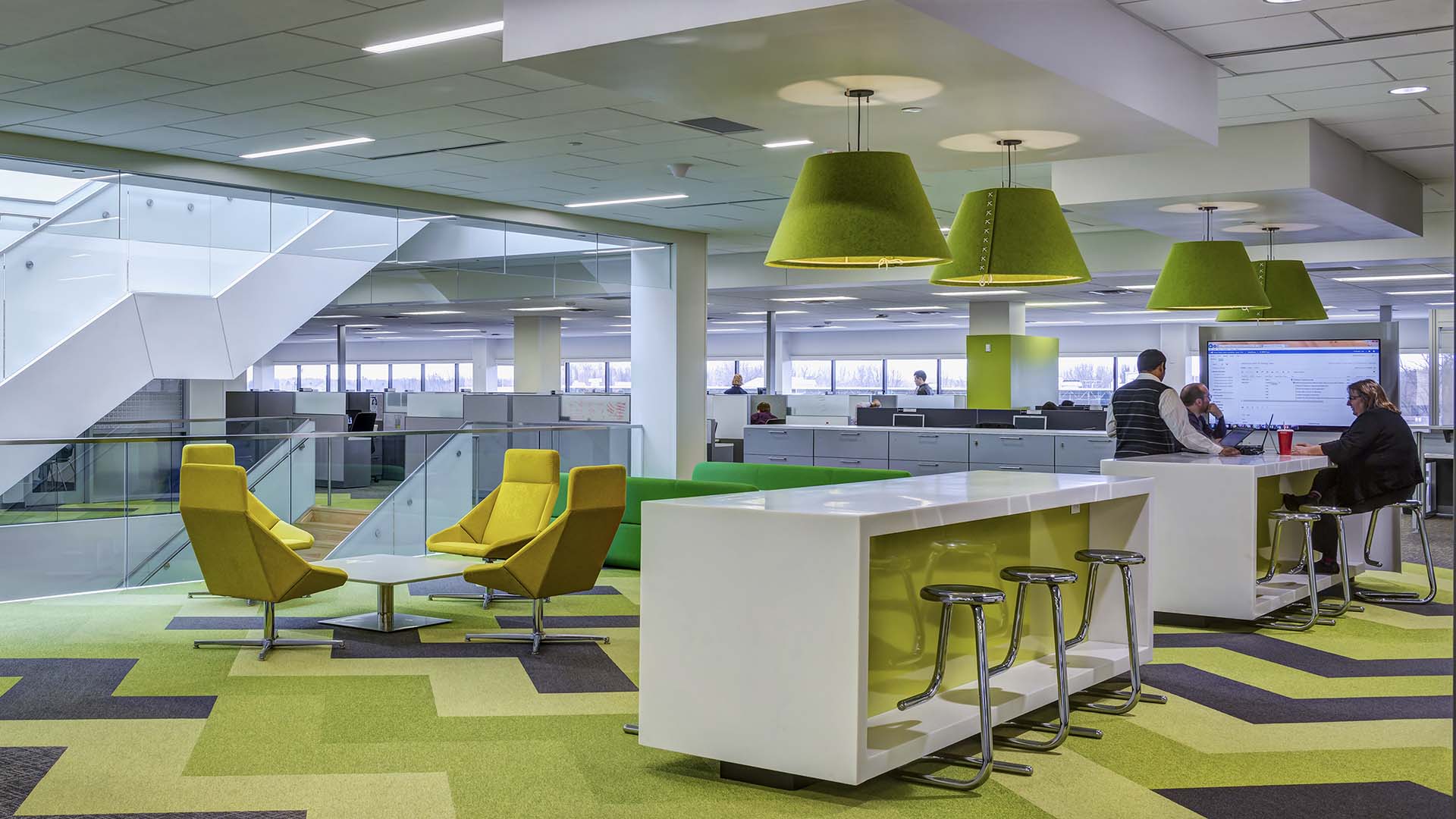The Workplace Myth: If You Build It, They Will Come

The open office trend increases collaboration, allows for flexible and adaptable spaces, and promotes sustainability and employee wellness. But do these innovative spaces always improve productivity? As these fluid, and often beautiful work environments evolve, managers need to understand something important: investing in a new workspace requires investing in solid team practices and principles.
Since moving into our LEED Platinum headquarters almost three years ago, we’ve come to realize it requires more than aesthetic to support team members. I’ve recently read a lot of articles written by folks who have fallen out of like with the open office. But I think open concept workplaces are just misunderstood. They require more than just white-boxing the floor plate and sitting everyone at open tables. You have to address design elements like sightlines and acoustics to create different areas for different kinds of work: heads down, co-working, presenting, and so on. You have to consider technology, furniture, and overall experience. But equally important, and often overlooked, is taking the time to create a corporate culture that supports the physical environment you’ve built. To explain, let’s look at the top three office trends of 2016.
1. The Open Office for Increased Collaboration
While many companies are moving into open office environments, very few executive suites live in the open office concept. The executives at Haworth, however, are embracing the more collaborative workplace company-wide. Rockford recently completed a “refresh” of Haworth’s leadership area, which prominently seats the company’s leadership in the center of a totally open workspace, rather than behind closed doors.
One of the biggest needs in the open office environment is change-driving leadership. An open office will physically bring people together simply by having more people in fewer square feet. But truly successful modern office environments need leaders who can create activity, bringing people and ideas together through new programming. In the case of our new office, this meant establishing a regular speaker series, Ted Talk Tuesdays, fitness groups, and wellness activities. Thoughtful programming throughout the building helps people explore new spaces and become accustomed to working in varied areas. And that in turn, leads to innovation born from serendipity – great thoughts and ideas that wouldn’t have otherwise happened!
2. Mobility: Working Anywhere and Everywhere
The open office cannot succeed without functional furniture. When we moved in the summer of 2013, I imagined the entire office would be vying for a seat into the comfortable indoor/outdoor common space. After some time, we realized there really wasn’t a large enough work surface to make the space usable. When we added tables, people started using the space. The open space was there for collaborating, but it required functional furniture to invite and support productive use.
This goes for technology, too. If you want to encourage a mobile workplace, the technology you offer needs to support moving from desk to desk and place to place. There are a number of new technologies to consider but in my experience, universal docking stations, plug-ins, adapters for various devices, and video conferencing are all essential.
3. Fun, with Expectations: Creating a Work Culture that Works
Pop star Bruno Mars recently said he doesn’t show up to the studio in sweatpants, because “you’re gonna get what sweat sounds like.” The same attitude could be applied to an office space. Work culture should show that you are there to work, and the space should reflect that too. When Rockford designed its space, it was important that fun was a part of the culture, as it had always been. We wanted people to feel comfortable, and we wanted rooms and areas that reflected that spirit of play. Still, we want our clients to get our best, most creative, most professional work, and we set expectations about how to work conscientiously in these environments. As builders of a changing world, we expect our team members to use innovative thinking. It’s important, then, that we are also dedicated to using that same creativity to align our culture with our workplace.
Open spaces are not going away. They are engaging, versatile, and stimulating places to work. They allow for collaboration, mental and physical shifts, and an emphasis on new ideas. With deliberate planning, managers can enter these spaces knowing that their company is productive – and happy.
previous Post
previous Post